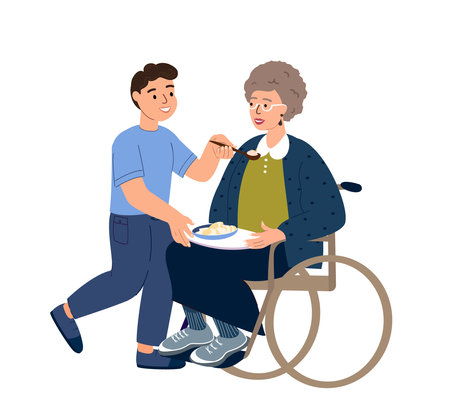1. Introduction: Understanding Hydration in British Culture
Hydration is a fundamental aspect of health and wellbeing, yet its importance can be shaped by cultural norms and daily routines. In the United Kingdom, the way people approach drinking fluids is deeply influenced by tradition, social habits, and even the unpredictable weather. From the cherished ritual of afternoon tea to the widespread preference for hot drinks over cold, these practices play a significant role in how hydration is perceived and maintained in everyday life. For individuals undergoing rehabilitation, these cultural preferences become particularly relevant. The familiar comfort of a warm cuppa or a glass of squash can not only encourage fluid intake but also provide emotional reassurance during recovery. Understanding how hydration fits into British culture allows healthcare professionals to develop more personalised and effective rehabilitation plans that resonate with patients’ lived experiences. Recognising these unique perspectives ensures that strategies for maintaining adequate hydration are both practical and meaningful, supporting better health outcomes within the UK context.
2. Traditional British Drinks and Their Place in Hydration
When considering hydration within the British context, it is important to acknowledge the unique cultural preferences that shape daily fluid intake. In the UK, traditional beverages such as tea, squash, and cordial are more than just drinks; they are woven into the social fabric and daily routines of many individuals, including those undergoing rehabilitation. Understanding these preferences allows healthcare professionals to provide care that is both respectful and effective.
Popular Beverages in British Culture
The table below highlights some of the most commonly consumed non-alcoholic drinks in Britain and explores their role in hydration:
| Beverage | Description | Cultural Relevance | Hydration Value |
|---|---|---|---|
| Tea (black or herbal) | Usually served with milk and sometimes sugar; consumed throughout the day | Considered a symbol of comfort, hospitality, and routine | Contributes to fluid intake; caffeine content may have a mild diuretic effect but overall hydrating when consumed moderately |
| Squash | Fruit-flavoured concentrate diluted with water | Commonly offered to children and adults alike; seen as a practical alternative to plain water | Encourages increased fluid consumption due to its palatable taste; low-calorie options available |
| Cordial | Sweeter, often more concentrated fruit syrup than squash; usually diluted with water | Often associated with nostalgic childhood memories and traditional gatherings | Promotes hydration but can be high in sugar unless sugar-free varieties are chosen |
| Water | Plain tap or bottled water, sometimes flavoured or sparkling | Increasingly promoted for health reasons but less central to social rituals compared to tea or squash | The most effective option for pure hydration; easily accessible throughout the UK |
The Social Aspect of Hydration Choices
In British society, offering a cup of tea or glass of squash is an act of kindness and welcome. These rituals play an important part in how individuals perceive their own hydration habits. For many older adults or those in rehabilitation settings, familiar beverages can offer emotional comfort while supporting their hydration needs.
Implications for Rehabilitation Settings
Culturally sensitive care recognises that encouraging patients to meet their hydration goals may require working with their preferred drinks rather than imposing unfamiliar choices. By incorporating beloved beverages such as tea or squash into hydration plans, practitioners can help ensure better compliance and enhance wellbeing during recovery.

3. Hydration Habits and Social Norms
Hydration habits in the UK are woven deeply into daily routines and social expectations, often reflecting broader cultural values. Unlike some countries where carrying a water bottle is the norm, many British people tend to hydrate during specific, socially accepted moments. Mealtimes are a primary occasion for drinking; it is customary to offer water or other beverages such as cordial or juice alongside lunch and dinner, yet outside these meals, there may be less emphasis on regular fluid intake.
Perhaps the most iconic British hydration ritual is the tea break. Tea holds a unique place in British culture, serving not only as a source of fluid but also as a cornerstone of social interaction and comfort. Scheduled tea breaks at work or home offer both psychological respite and an opportunity for subtle hydration, although caffeinated drinks like tea do not always provide optimal hydration benefits. Coffee breaks, while increasingly popular, follow similar patterns.
Public perceptions regarding hydration also shape behaviours. In some settings, regularly sipping water throughout the day may be seen as unusual or even disruptive—particularly in formal environments such as meetings or traditional workplaces. This can inadvertently discourage people from maintaining adequate hydration levels. Additionally, older adults—who may already have diminished thirst cues—could internalise these norms and further reduce their fluid intake.
Understanding these routines and social expectations is crucial in rehabilitation settings. Encouraging hydration requires sensitivity to established habits while gently promoting healthier practices. By integrating culturally resonant strategies, such as offering preferred hot drinks with added water options or aligning hydration prompts with familiar social rituals, rehabilitation professionals can support patients in achieving better health outcomes within the comforting framework of their everyday lives.
4. Challenges in Promoting Hydration During Rehabilitation
Ensuring adequate hydration during rehabilitation presents a unique set of challenges, particularly within the context of British cultural preferences and daily routines. Both individuals undergoing rehabilitation and their carers often encounter barriers that can hinder optimal fluid intake, despite its recognised importance for recovery and wellbeing.
Cultural Barriers to Hydration
British culture, with its deep-rooted traditions around beverages like tea and coffee, plays a significant role in shaping hydration habits. While these drinks do contribute to overall fluid intake, they may not always be the most effective choices for maintaining proper hydration, especially if consumed in excess or with added sugars. Additionally, some individuals may be less inclined to drink water regularly, either due to taste preferences or longstanding habits.
Lifestyle Factors Impacting Fluid Intake
The daily structure of life in the UK can also affect hydration patterns. For example, busy lifestyles or adherence to scheduled care routines may lead to missed opportunities for drinking fluids. In rehabilitation settings, some patients may be reluctant to request drinks frequently due to concerns about being a burden or because of mobility limitations.
Common Barriers Experienced by Patients and Carers
| Barrier | Description | Potential Cultural Influence |
|---|---|---|
| Preference for Hot Drinks | Tea and coffee are favoured over water, sometimes limiting total fluid variety. | Social rituals and comfort associated with hot beverages. |
| Reluctance to Request Help | Patients may avoid asking carers for drinks due to politeness or fear of being troublesome. | British values of independence and not wanting to impose on others. |
| Lack of Awareness | Both patients and carers might underestimate fluid needs during recovery. | Misperceptions about thirst as an indicator of hydration status. |
| Sensory Changes | Taste changes post-illness or medication can make plain water less appealing. | A preference for flavoured drinks or warm beverages as comfort measures. |
| Structured Meal Times | Hydration opportunities are often tied only to meal times. | Cultural norms around set tea breaks rather than frequent sips throughout the day. |
Addressing these challenges requires sensitive adaptation of hydration strategies that respect individual preferences while encouraging sufficient fluid intake. By fostering open communication between carers and those receiving care, creating flexible hydration routines, and offering culturally acceptable alternatives, it is possible to promote better hydration outcomes during rehabilitation in the UK context.
5. Culturally Sensitive Strategies for Hydration Support
Supporting optimal hydration in British rehabilitation settings requires more than simply offering fluids—it means understanding and respecting the diverse cultural preferences of patients. Healthcare professionals and caregivers can adopt several practical, culturally appropriate strategies to encourage fluid intake while making patients feel understood and valued.
Offer Familiar and Preferred Beverages
Whenever possible, provide drinks that are familiar and comforting to the patient. For many British individuals, a cup of tea is more than just a beverage; it represents warmth, routine, and social connection. However, be mindful of variations—some may prefer herbal infusions, while others enjoy traditional black tea with milk. Similarly, those from South Asian backgrounds might favour masala chai or lassi, whereas patients from Caribbean communities might appreciate coconut water or sorrel drink. By acknowledging these preferences, carers help foster a sense of home and belonging during rehabilitation.
Respect Religious and Cultural Practices
It’s important to recognise periods when patients may restrict fluid intake for religious reasons, such as Ramadan among Muslim patients. In these cases, plan hydration support around fasting hours by offering nourishing fluids at dawn and dusk. Always check if there are any dietary restrictions or rituals associated with certain drinks, ensuring that your approach is both respectful and supportive.
Create a Welcoming Environment
Hydration is often a social activity in British culture—think of sharing a pot of tea or gathering for cordial on a summer afternoon. Encourage communal hydration opportunities when safe and appropriate by arranging small group tea breaks or inviting families to bring favourite beverages from home. This not only supports hydration but also enhances emotional wellbeing during rehabilitation.
Use Clear Communication and Visual Prompts
Language barriers or cognitive challenges may affect a patient’s ability to express their preferences. Use visual aids or simple language cards displaying various drink options to facilitate choice. Regularly check in with patients about their likes and dislikes, adapting your approach as needed.
Collaborate with Multidisciplinary Teams
Work closely with dietitians, speech therapists, and cultural liaison officers to tailor hydration plans that meet both medical needs and cultural expectations. Training staff in cultural competence ensures everyone understands the importance of personalised hydration support.
By weaving cultural awareness into everyday hydration practices, British rehabilitation teams can offer care that is not only clinically effective but also deeply respectful and comforting to all individuals on their recovery journey.
6. Conclusion: Integrating Cultural Understanding in Rehabilitation Practice
Recognising and respecting cultural preferences in hydration is not simply a matter of politeness; it is a fundamental aspect of person-centred rehabilitation care. In the context of British rehabilitation, where individuals may come from diverse backgrounds and hold distinct beliefs around hydration, the importance of cultural sensitivity cannot be overstated. By understanding and valuing these differences—whether it involves providing preferred types of teas, serving water at the right temperature, or acknowledging specific drinking customs—practitioners foster trust and engagement with those in their care.
Integrating cultural awareness into hydration practices has tangible benefits for wellbeing. When individuals feel seen and respected, they are more likely to participate actively in their rehabilitation journey, leading to improved outcomes and satisfaction. Moreover, culturally attuned care helps to bridge communication gaps, reduce misunderstandings, and create a supportive environment where every individual’s needs are prioritised.
Ultimately, embedding cultural understanding into daily routines is about more than meeting basic physiological needs; it is about nurturing dignity and autonomy throughout the rehabilitation process. As we continue to enhance rehabilitation services across the UK, let us remain mindful that small acts—like offering a familiar cuppa or asking about hydration preferences—can make a profound difference in someone’s recovery and overall quality of life.

